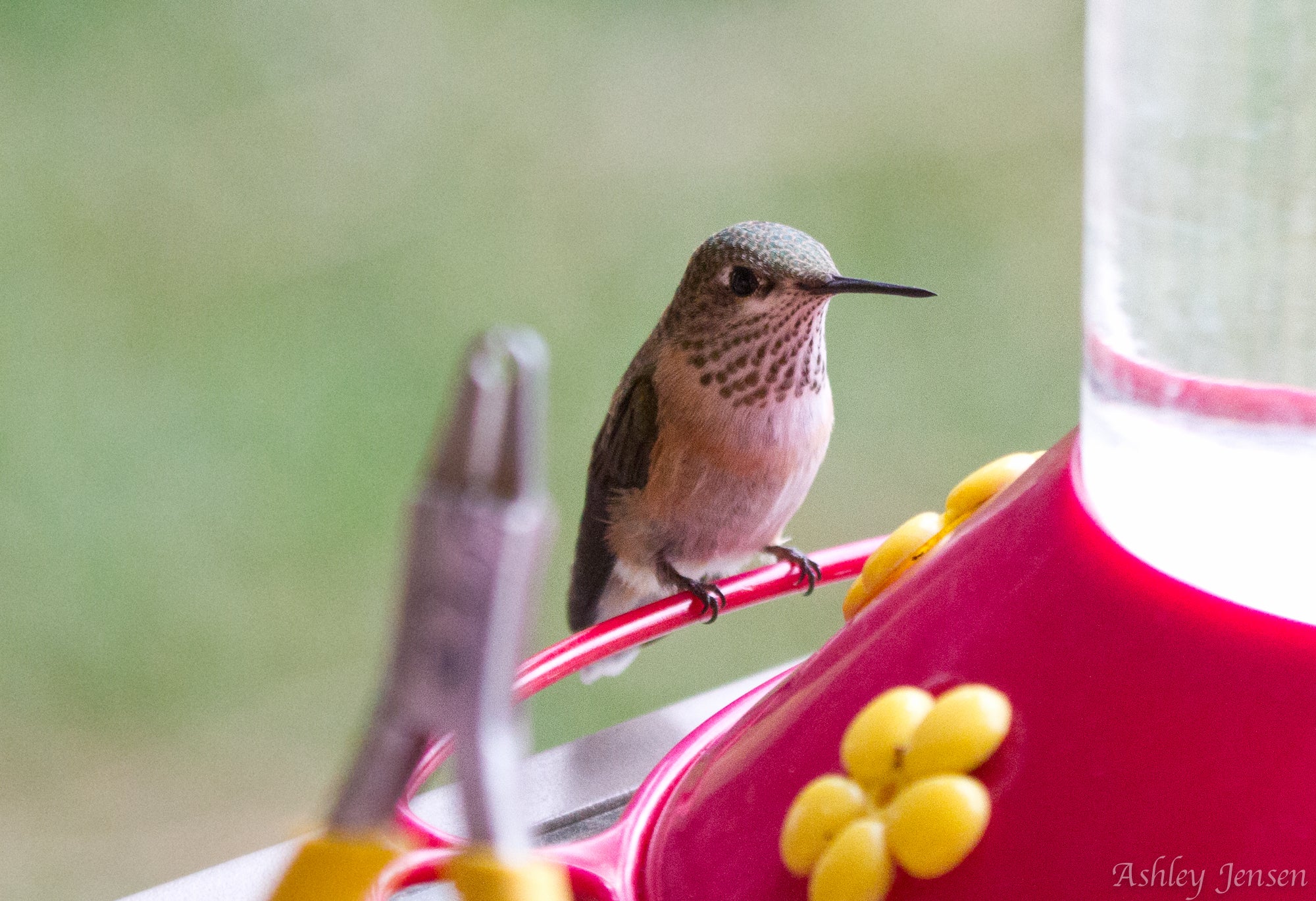by Jessica Pollock
Planning on spending more time at home this summer? Backyard bird feeding is the perfect social-distancing activity! Now is the time to get your hummingbird feeders up – our favorite flying jewels are quickly making their way back to us!

The recipe
Simply fill your feeders with 4 parts water to 1 part white sugar. Mix, boil, cool and fill!
Cane and beet sugars are both white, and both acceptable. They resemble the sucrose nectar of flowers the most closely.
Don’t ever use brown or raw sugar, honey, molasses, or anything similar which can harm a hummingbird. Try not to make it too much sweeter than a 4:1 ratio (there is such a thing as too sweet even for a hummingbird – it can be hard on their digestion and can even dehydrate them if there’s not enough fresh water available, for example in the winter, but feeding hummingbirds in winter is an entirely different topic!).
Dos and don’ts
Did you know that hummingbirds don’t want red dye added to the water? It’s hard on their kidneys and makes their poop red! The red color on your feeder is enough for a hummingbird to find it.
Don’t forget to clean it regularly. Hot water and a clean toothbrush works great. If you use soap, make sure it’s very well rinsed. A little dash of white vinegar also works great. Don’t let the nectar get cloudy. In the heat of summer, you might have to change it every couple of days. But the hummingbirds will appreciate your dedication!
Ant problem? Avoid using insecticides near your feeder (both spraying and using ant guards filled with pesticides). Avoid greasy solutions…that sticky substance that traps ants also gets on hummingbird feathers and can mess with their ability to thermoregulate. Water moats are great and safe for the birds. Another effective solution is to hang your feeder by thin fishing line…thin enough that it’s hard for the ants to walk down without falling off.
Wasp problem? Look for a feeder that’s only red – no yellow! Wasps generally cannot see the color red. Yellow attracts them.
Not just nectar
Did you know that hummingbirds do not survive on sugar and nectar alone? Sugar certainly makes up a large component of their diet, but they also need proteins, fats, and vitamins. Their largest source of protein is from eating insects. If you watch hummingbirds near your feeders, you might get to see them do some erratic, zig-zag flying – this is them catching insects flying through the air. They will also pluck insects directly off of plants. Some of their favorite “bugs” include small flies and gnats, ants, tiny insect eggs, larva, and even small spiders. Some people report seeing hummingbirds eating dirt, sand, and even campfire ashes too…we think this is possibly how they get certain vitamins and minerals into their system. So the diet of your favorite backyard hummingbird is actually quite complex and varied – they can’t survive on sugar alone. But with heartbeats easily reaching 800-1,000 beats per minute, they definitely need and appreciate that sugar rush!